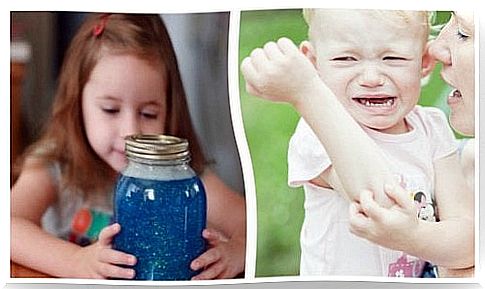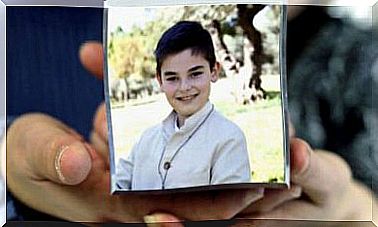Maria Montessori’s Techniques For Channeling Anger And Nervousness In Children
For the designer of the Montessori Method, emotion and socialization must go hand in hand. Parents play a fundamental role in the development of their children.

While it is certain that Montessori pedagogy has been as much admired as it has been criticized, it offers an interesting vision of what we can do, at the family level, to improve the education of our children on a daily basis.
In this article, we want to talk to you about anger and nervous outbursts in toddlers, which can be difficult to channel, control, or even understand.
One of the most useful concepts left by Maria Montessori is that of sensitive periods.
Children from birth to age 6 experience what she defines as “windows of opportunity”.
These are moments when they have innate capacities that arise to learn, to acquire certain skills and certain aptitudes.
It’s when they open up that we have the best opportunity to teach them how to channel and understand their complex emotional world that sometimes overwhelms them.
In the rest of this article, we will share with you the simple strategies offered by this psychologist.
Montessori pedagogy to channel anger and crises in children
We all know more or less how the centers which apply Montessori pedagogy work.
They seek to promote autonomy in the child, so that he is responsible for his learning through his curiosity and his interactions with the whole universe that surrounds him.
What many parents may wonder is how Montessori pedagogy can help them in their own homes.
It is indeed the universe closest to children, the one in which they receive the most basic educational rules.
We are going to give you some tips for you to think about that will surely help you channel your children’s angry moments.

Socio-emotional education
Maria Montessori never talked about education or emotional intelligence outright.
For the famous teacher, emotion and socialization must go hand in hand.
When a child has a seizure, he feels in particular that his social environment does not adjust to his expectations.
- He cannot get something he wants, he feels offended, hurt by someone or something, and he is unable to get gratification.
All of this results in tears, screams and beatings. - Emotions flow in this socio-emotional context of the child interacting with adults and other children.
- Even if many people criticize the Montessori method, which would offer false freedom and independence of paper to children, we must not forget something fundamental: the adult is a guide, he brings learning and must be a model that we want to imitate and follow.
- The sensitive periods, between birth and the age of 6 in a child, are key moments so that we can provide answers to every child’s question and every emotion.
The aspects that we must take into account to guide the child in his emotional world
- Do not neglect any words or behavior of your child, and do not compare him to others. All of this will generate anger, for sure.
- Try to make your child always feel safe, feel comfortable talking to you, feel safe discovering the world or talking with other children, but also play in a respectful way, to confide and to create.
- Allow the child to be wrong. Give him advice, but let him resolve questions arising from his own mistakes.
Children need to do things on their own in order to feel capable and to develop their self-esteem. - When a child expresses anger, there is an emotion that he cannot bring out. There is a situation in him or in his universe that we need to discover and understand.
It is fundamental that, as parents, we guide our children with calm and patience.
Never neglect these expressions of anxiety and nervousness, especially in the little ones. You have to find out where it comes from and offer them solutions.
Calming jars
In recent years, calming jars have been developed to relieve stress and anxiety in children.
We will explain their purpose and how to use them.
- These jars offer visual stimulation that allows the child to focus his attention for a few moments, thanks to the movements of the sequins.
- They should always be used in the company of an adult.
- You can, for example, bring them to your children every day when they are in bed.
While they are engrossed in the movement of the glitter, you can ask them how their day went, or also if something is bothering them. - Ask your questions in a confident manner, without judgment, without direct questioning, but in an almost playful way, conducive to the emotional development of your children.
The calming jar is a simple remedy that can also be of great help to you.
If you want to make yours at home, do not hesitate to read our article which explains how to make a luminous jar.









